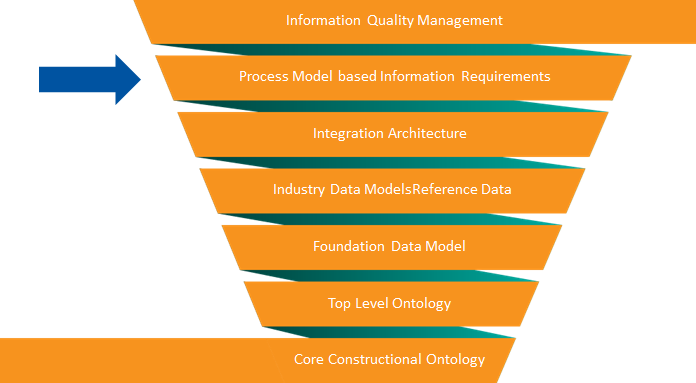Integrated Information Management
Running a business, or other organisation, of any size means making decisions, all the time, at all levels. For any decision to be a good decision, whether the it is made by a person or by a machine, information is essential; the correct information must be available at the time it is needed and of a suitable quality to enable the decision to be made properly.
This page gives an overview of what's involved in ensuring that information is fit for the collective decisions in an integrated and well managed managed enterprise. Further information can also be found at:

Elements of integrated information management
Integration Data Models
An integrated information management framework aims to ensure that this requirement for suitable information is met, while keeping the costs of managing the required information under control. In almost any business there are multiple systems for managing information: a purchasing system, an HR system, a sales system, and then systems for managing the business of the business, such as a PLM system or a stock control system or otherwise as appropriate. There are also nearly always a large number of human systems and processes, often consisting of manually transferring data from one of these systems to another, or into or out of unstructured human documents. Most organisations don't realise how reliant they are on unstructured information and the inherent knowledge of people with experience of the activities, no matter how critical.
Without taking an integrated approach to information management these translation processes will always continue to exist. As the business grows and gets more complex more systems will be introduced; these will require yet more manual processes to transfer data into and out of the other systems. It is possible to automate the data transfer process, but without an integrated data modelling approach each individual translation process must be analysed and implemented explicitly; this rapidly becomes very costly to produce and especially to maintain.
More importantly, because each information system has only a narrow focus, information can be lost which will be needed later by other systems or processes. This means that when that information is required later on it will need to be rediscovered or recreated, or a decision will have to be made on the basis of incomplete information. This also implies unnecessary cost, whether to produce the required information again or as a result of making bad decisions due to unavailable information.
The path out of this mess is through a mature approach to information quality management involving an integration data model. This is a data model constructed to be fit to consistently represent any and all information required by the business rather than to make any particular business process easier to implement. Ideally the model needs to be fit to represent any data the business may need in the future, too, otherwise the modelling will need to be redone (at unnecessary expense); this is a very open-ended requirement to meet, and requires a different approach to data modelling from that traditionally taken.
4D Data Modelling
One of the more difficult aspects of creating an integrated information management framework is reconciling the different data models used by the different systems we intend to integrate. Systems developed in isolation from each other invariably end up modelling the same real-world objects and activities in different ways, because each system is only looking at the aspect of the situation that is useful for that system's particular purpose.
Inconsistent data is not fit for integrated use and implies ambiguity in what is being represented. Without a way of addressing the consistency challenge data will be semantically and structurally ambiguous.
The intention of the 4D approach to data modelling is to provide an overall framework within which to develop models (technically through the use of a top-level ontology (TLO)) which matches as closely to the physical reality as possible. The reason for this is that where you have separate systems modelling the same real-world things using different data models the only common point of reference between the different systems is the real-world things they are modelling. If you build your integration data model within a framework which represents things as they are in the real world, rather than as is convenient for a particular business process, then you are effectively guaranteed at the start that anything in the real world will be representable in your model. Two models created independently for the same activity should be recognisably similar (this is not the case without a TLO).
Developing such a framework from scratch is a difficult and highly technical process (the real world is a complicated place). However, an understanding of the technical foundations is not necessary in order to use the results. This activity modeller uses a top-level framework called HQDM (High Quality Data Models) developed by Matthew West.
Recent work by the National Digital Twin Programme to develop an Information Management Framework comprising of a Foundation Data Model incorporating the necessary commitments of a TLO was summarised at this event.
Please get in touch, and contribute to the open source resources, if you are interested in adopting or getting involved in this work.